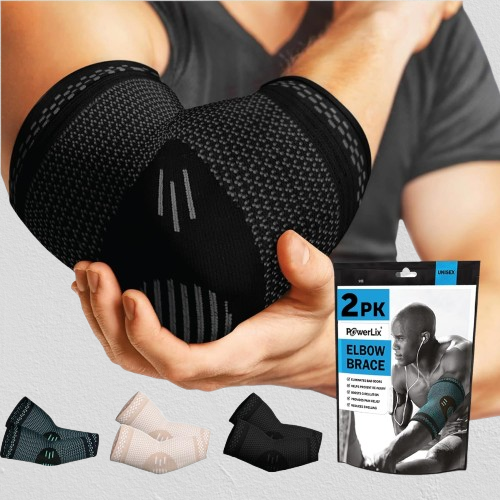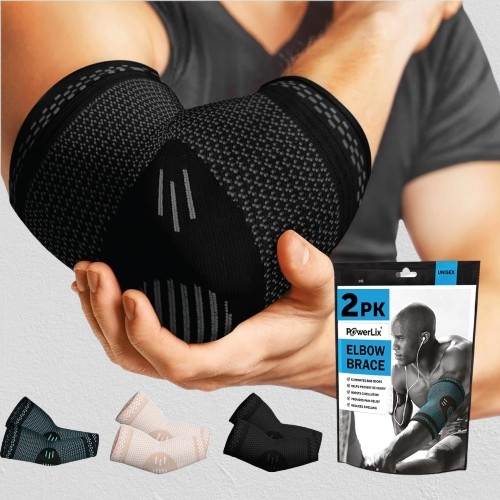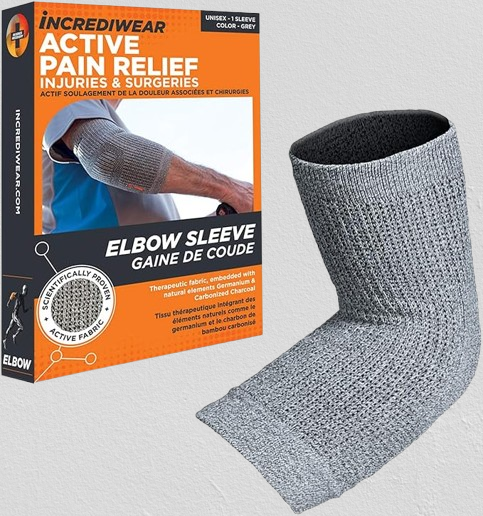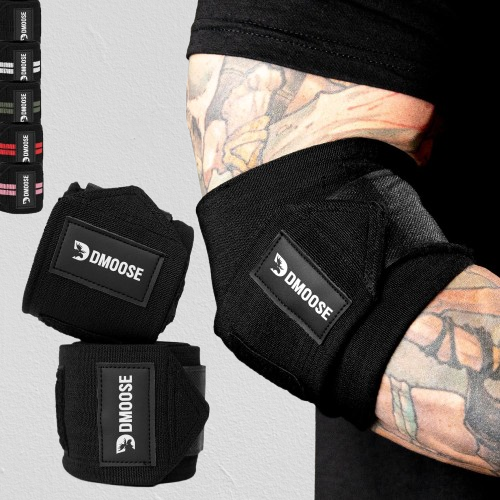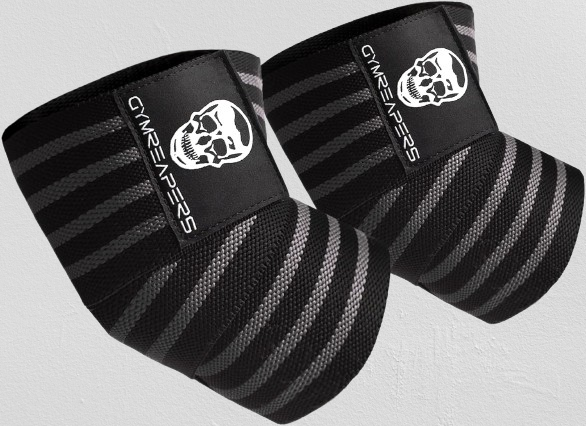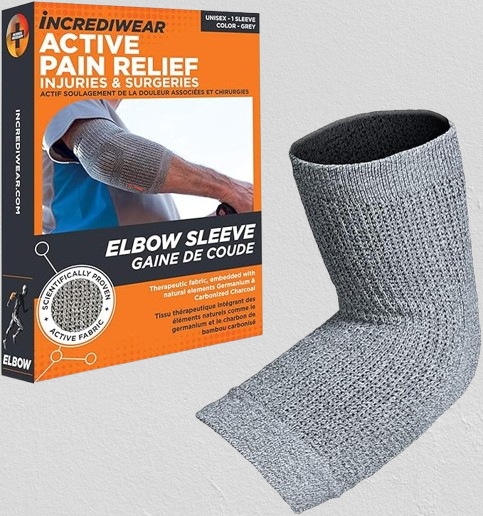Benefits of Using the Best Elbow Sleeve for Lifting
Elbow sleeves are vital for weightlifters and fitness enthusiasts, providing several key benefits. Firstly, they offer joint support, stabilizing the elbow during heavy lifting or strenuous movements, which helps prevent injuries and strains. This is particularly crucial for lifters dealing with high loads or repetitive motions that put significant stress on the elbow joint.
Secondly, the compression from the sleeve helps to improve blood circulation, which aids in faster recovery by reducing swelling and promoting the removal of lactic acid build-up. This compression can also decrease muscle fatigue during extended workout sessions, allowing for longer, more effective training.
Elbow sleeves provide warmth, keeping the joints and muscles warm, reducing stiffness, and allowing for greater flexibility and mobility. The warmth can also reduce the risk of overextension injuries, as warm muscles and tendons are more pliable and less likely to be injured.
Another benefit is enhanced proprioception, or body awareness. The sleeve provides feedback to the brain about joint position, which can improve technique and posture during lifting. This can lead to better form, reduced risk of injury, and improved overall performance.
Lastly, elbow sleeves provide confidence and comfort, allowing lifters to push through barriers while feeling supported. With reduced pain and improved support, athletes can focus more on their lifts rather than worrying about joint instability or discomfort. By wearing the best elbow sleeves, lifters can optimize their training while minimizing injury risks and improving recovery times.
Importance of Using the Best Elbow Sleeve for Lifting
Using the best elbow sleeve for lifting is essential for both novice and experienced weightlifters. Elbow sleeves serve a crucial role in maintaining joint health and preventing injuries, which can be common in repetitive lifting movements. By providing stability and support, elbow sleeves help protect the delicate elbow joint during heavy lifts like bench presses, rows, and overhead presses, where the joint is under immense stress.
The compression of a high-quality elbow sleeve is another important aspect. Compression increases blood flow to the muscles and joints, enhancing oxygen delivery and removing metabolic waste products more efficiently. This means quicker recovery times, less soreness, and reduced muscle fatigue during and after workouts. A good elbow sleeve can also help alleviate tendinitis and inflammation, which are common conditions that arise from overuse.
Elbow sleeves also provide warmth, keeping the joint temperature elevated, which helps to maintain flexibility and reduces the risk of strains or tears. This is particularly important in colder environments, where muscles are more prone to stiffness and injury.
For athletes seeking to maximize their lifting potential, elbow sleeves also enhance roprioception, the body’s ability to sense the positioning of joints and muscles. This improved awareness helps athletes maintain proper form, reducing the risk of injury from poor technique and ensuring that each lift is performed optimally.
Incorporating the best elbow sleeve into your training routine can lead to better performance, reduced pain, and increased longevity in the sport. The protection and support offered by a high-quality sleeve make it a must-have for anyone serious about lifting and injury prevention.
Top 04 Best Elbow Sleeve for Lifting
Types of Best Elbow Sleeve for Lifting
When selecting the best elbow sleeve for lifting, it’s essential to understand the different types available, as each offers unique benefits based on the material, design, and purpose.
- Neoprene Sleeves: These are the most common type of elbow sleeve used for lifting. Made from thick neoprene, they provide optimal compression and joint support. Neoprene sleeves are especially useful for powerlifters and strongmen because they are durable, provide excellent warmth, and are effective for heavy lifting routines. The thickness of these sleeves can vary, with options from 5mm to 7mm, depending on the level of support required.
- Elastic Compression Sleeves: Unlike neoprene sleeves, elastic compression sleeves are typically made from a blend of nylon, spandex, and rubber. These are lighter and offer more flexibility while still providing some compression and support. They are ideal for bodybuilders or athletes who require greater mobility but still want to protect their elbows from strain.
- Copper-Infused Sleeves: These sleeves are often marketed for their anti-inflammatory benefits. Copper-infused fabrics are believed to have properties that help reduce swelling and pain. These sleeves are great for individuals dealing with joint pain, tendinitis, or arthritis, though they tend to offer less compression and support compared to neoprene sleeves.
- Adjustable Wraps: Elbow wraps are an alternative to sleeves and offer adjustable compression levels. These wraps are great for individuals who need targeted support or prefer varying tightness depending on the exercise. However, they may not provide as much overall coverage and warmth as a sleeve.
Choosing the right type of sleeve depends on the type of lifting you do and the level of support you need. For heavy lifting and stability, neoprene sleeves are the best choice, while elastic sleeves are more suitable for lighter workouts with higher flexibility.
How to Choose the Right Best Elbow Sleeve for Lifting?
Choosing the right elbow sleeve for lifting involves several key considerations to ensure you get the appropriate support, comfort, and protection for your training needs.
- Material: The material of the sleeve is crucial. Neoprene is the most popular choice for heavy lifters because it provides excellent compression, support, and warmth. If you’re looking for a lighter option, elastic or copper-infused fabrics offer more flexibility and breathability but may provide less support. Consider your training style: if you’re lifting heavy weights, a more robust material like neoprene is best, while lighter workouts may only require a compression sleeve made from spandex or nylon.
- Size and Fit: Getting the right size is vital for proper function. Elbow sleeves that are too tight can restrict movement and cut off circulation, while sleeves that are too loose won’t offer the necessary support. Most manufacturers provide sizing charts based on your arm measurements. Ensure the sleeve fits snugly but comfortably.
- Compression Level: The level of compression required depends on your goals. For injury prevention and joint support during heavy lifting, a higher compression sleeve is ideal. However, if you want to improve blood flow and reduce mild soreness, moderate compression should suffice.
- Purpose: Different sleeves serve different purposes. Powerlifters and strongmen should opt for thicker neoprene sleeves that offer maximum support and warmth. In contrast, bodybuilders or CrossFit athletes may prefer thinner, more flexible sleeves for mobility and comfort.
- Durability: Since sleeves are subject to regular stress during workouts, choose a product that’s durable and long-lasting. Look for reinforced stitching and high-quality materials that can withstand frequent wear.
By considering these factors, you can choose an elbow sleeve that supports your specific lifting style, ensuring better performance, injury prevention, and comfort.
How to Wear and Use the Best Elbow Sleeve for Lifting Properly?
To maximize the benefits of an elbow sleeve, it’s important to know how to wear and use it properly during lifting.
- Choosing the Correct Size: First, ensure you have the right size by measuring the circumference of your arm at the midpoint of the elbow. Most brands offer a sizing chart. A properly fitted sleeve should feel snug but not overly tight. A too-tight sleeve can restrict blood flow, while a too-loose sleeve won’t provide adequate support.
- Positioning: Place the sleeve over your elbow, ensuring that the sleeve’s center aligns with the middle of your elbow joint. The sleeve should cover the entire elbow, extending a bit above and below the joint to provide full support. Make sure there are no wrinkles or folds that could cause discomfort or uneven pressure.
- Warm-up: Before wearing the sleeve, warm up your muscles and joints with light cardio or dynamic stretching. The sleeve will help maintain warmth and flexibility, but pre-warming ensures your muscles are ready for the workout ahead.
- During Lifting: Wear your elbow sleeve during your most strenuous lifts, such as bench presses, overhead presses, or deadlifts. The sleeve will provide compression and support, helping to stabilize the joint and reduce stress. If you’re performing lighter exercises or stretches, you may not need to wear it, as it could limit mobility.
- Post-Workout: After lifting, remove the sleeve to allow your skin to breathe and cool down. If you feel soreness, you can continue to wear the sleeve for additional support and compression as part of your recovery routine.
Wearing the elbow sleeve properly can significantly enhance your lifting performance, prevent injury, and aid in recovery.
How to Care for the Best Elbow Sleeve for Lifting?
Proper care of your elbow sleeve is essential to ensure its longevity and effectiveness. Here’s how you can maintain it:
- Regular Cleaning: Elbow sleeves absorb sweat during workouts, which can lead to odor and bacterial growth. To avoid this, wash your sleeves regularly. Most sleeves can be machine-washed on a gentle cycle with cold water, but it’s important to check the manufacturer’s care instructions. Avoid using harsh detergents, as these can break down the material and reduce the sleeve’s effectiveness over time.
- Air Drying: After washing, allow your sleeve to air dry. Avoid using a dryer, as the heat can damage the fabric, especially neoprene, which may lose its elasticity or shrink. Hang the sleeve in a well-ventilated area, away from direct sunlight, which can also cause material degradation.
- Odor Control: If your elbow sleeve develops a persistent odor, soaking it in a mixture of water and mild vinegar or baking soda before washing can help neutralize the smell. Rinse thoroughly to ensure no residue remains.
- Inspect for Wear and Tear: Regularly inspect your sleeve for signs of wear, such as fraying seams, thinning material, or reduced elasticity. Over time, even high-quality sleeves can lose their supportive properties. If you notice any significant damage, it may be time to replace your sleeve to maintain optimal joint support.
- Storage: When not in use, store your elbow sleeve in a cool, dry place. Avoid crumpling it up in your gym bag for extended periods, as this can cause creases and weaken the material over time.
By following these care instructions, you’ll preserve the integrity and performance of your elbow sleeve, ensuring it continues to provide the support and compression you need for lifting.
What is the Best Elbow Sleeve for Lifting Company?
Several companies stand out for producing high-quality elbow sleeves for lifting, known for their durability, support, and comfort. Here are some top brands:
- SBD: Widely regarded as a top brand in strength sports, SBD elbow sleeves are popular among powerlifters, weightlifters, and strongmen. These sleeves are made from premium neoprene and offer excellent compression and support. They are designed for heavy lifting and come in various thicknesses to accommodate different needs. SBD is particularly noted for its compliance with powerlifting competition standards, making it a top choice for serious lifters.
- Rehband: Another well-respected brand in the weightlifting community, Rehband is known for its anatomically shaped elbow sleeves that provide both support and mobility. Rehband sleeves are versatile and often used by CrossFit athletes, bodybuilders, and weightlifters. They are designed to enhance performance and protect against injury without restricting movement.
- Rogue Fitness: Rogue is a well-known name in the fitness world, producing a range of gear for strength training. Their elbow sleeves are designed with high-quality neoprene and are ideal for both novice and experienced lifters. Rogue sleeves are durable and provide excellent joint stability, especially during heavy lifts.
- Stoic: Stoic sleeves are known for their heavy-duty construction, offering significant compression and warmth. They are particularly popular among powerlifters and athletes who lift heavier weights. Stoic products are designed to enhance performance and reduce the risk of injury during intense training sessions.
Each of these brands offers excellent elbow sleeves, with features suited to different lifting styles and needs. Choosing the best elbow sleeve company ultimately depends on your specific preferences, such as material thickness, compression level, and intended use.
